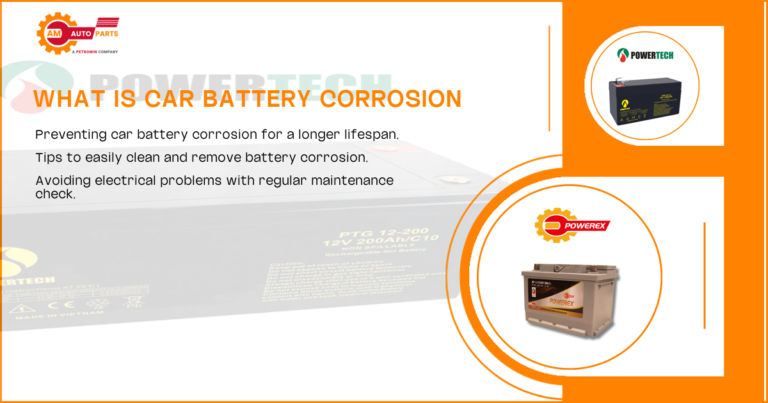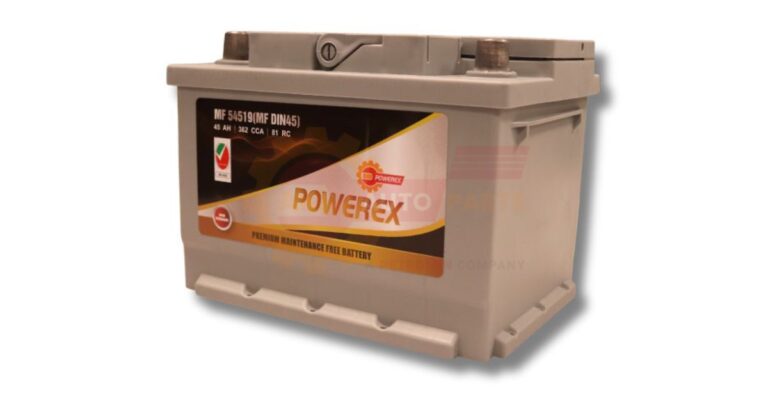How Car Battery Charger Works
Understanding Car Battery Basics
Car batteries are essential components that power the electrical systems in vehicles. They store energy in chemical form and convert it into electrical energy to start the engine and power accessories. The most common type of car battery is the lead-acid battery, which has been used for over a century due to its reliability and cost-effectiveness.
Chemical Reactions in Lead-Acid Batteries
Lead-acid batteries operate through a series of chemical reactions. When the battery discharges, lead dioxide on the positive plate and sponge lead on the negative plate react with sulfuric acid to produce lead sulfate, water, and energy. This process is reversed during charging, restoring the battery’s capacity.
- Lead dioxide and sponge lead are key reactants.
- Sulfuric acid acts as the electrolyte.
- Energy is released during discharge and stored during charging.
Components of a Car Battery
A car battery consists of several components that work together to store and deliver electrical energy. These include the positive and negative plates, separators, electrolyte, and casing. The plates are made of lead and lead dioxide, while the separators prevent short circuits.
- Positive and negative plates are crucial for chemical reactions.
- Separators ensure safety by preventing short circuits.
- The casing protects internal components from damage.
Voltage and Capacity Explained
Voltage and capacity are critical parameters of a car battery. Voltage refers to the electrical potential difference, typically 12 volts for most car batteries. Capacity, measured in ampere-hours (Ah), indicates how much energy the battery can store and deliver over time.
- Standard car batteries have a voltage of 12 volts.
- Capacity is measured in ampere-hours (Ah).
- Higher capacity means longer energy delivery.
The Charging Process of Car Batteries
Charging a car battery involves replenishing its energy by reversing the chemical reactions that occur during discharge. This process is essential for maintaining the battery’s performance and longevity.
Alternator’s Role in Charging
The alternator is a crucial component in a vehicle’s charging system. It converts mechanical energy from the engine into electrical energy, which is used to charge the battery and power the vehicle’s electrical systems. The alternator ensures the battery remains charged while the engine is running.
- Converts mechanical energy to electrical energy.
- Charges the battery while the engine runs.
- Powers the vehicle’s electrical systems.
Charging Cycles and Battery Life
Car batteries undergo charging cycles, which involve discharging and recharging. The number of cycles a battery can endure affects its lifespan. Proper charging practices can extend battery life, while frequent deep discharges can shorten it.
- Charging cycles impact battery lifespan.
- Proper charging extends battery life.
- Deep discharges reduce battery longevity.
Overcharging and Undercharging Risks
Overcharging and undercharging are detrimental to car batteries. Overcharging can cause excessive heat and gas production, leading to battery damage. Undercharging results in sulfation, where lead sulfate crystals form on the plates, reducing capacity.
- Overcharging generates heat and gas.
- Undercharging leads to sulfation.
- Both conditions harm battery health.
Types of Car Battery Chargers
Car battery chargers come in various types, each designed for specific charging needs. Understanding these types helps in selecting the right charger for your battery.
Smart Chargers vs. Trickle Chargers
Smart chargers are advanced devices that automatically adjust the charging rate based on the battery’s condition. They prevent overcharging by switching to a maintenance mode once the battery is fully charged. Trickle chargers, on the other hand, provide a constant low charge, suitable for maintaining battery charge over long periods.
- Smart chargers adjust charging rates automatically.
- Trickle chargers provide a constant low charge.
- Smart chargers prevent overcharging.
Battery Maintainers and Their Functions
Battery maintainers are designed to keep batteries at optimal charge levels. They are ideal for vehicles that are not used frequently, as they prevent battery discharge and extend battery life.
- Maintain optimal charge levels.
- Ideal for infrequently used vehicles.
- Extend battery life by preventing discharge.
Jump Starters and Emergency Charging
Jump starters are portable devices used to start a vehicle with a dead battery. They provide a quick burst of power to the battery, allowing the engine to start. Emergency charging is crucial in situations where immediate battery power is needed.
- Provide quick power bursts for starting engines.
- Essential for emergency situations.
- Portable and easy to use.
How Car Battery Chargers Function
Car battery chargers are designed to replenish the energy in a battery by controlling the flow of electricity. Understanding their function is key to using them effectively.
Voltage Regulation in Chargers
Voltage regulation is a critical feature in battery chargers. It ensures that the charger delivers the correct voltage to the battery, preventing overcharging and undercharging. This regulation is essential for maintaining battery health.
- Ensures correct voltage delivery.
- Prevents overcharging and undercharging.
- Maintains battery health.
Current Flow During Charging
The flow of current during charging is controlled to ensure efficient energy transfer. Chargers regulate the current to match the battery’s capacity, optimizing the charging process and preventing damage.
- Regulates current flow for efficiency.
- Matches current to battery capacity.
- Optimizes charging process.
Safety Features in Modern Chargers
Modern chargers are equipped with safety features to protect both the battery and the user. These include short-circuit protection, reverse polarity protection, and temperature monitoring. These features enhance safety and prevent accidents.
- Short-circuit protection prevents damage.
- Reverse polarity protection ensures correct connection.
- Temperature monitoring prevents overheating.
Troubleshooting Car Battery Issues
Car battery issues can arise due to various factors. Identifying and addressing these issues promptly can prevent further damage and ensure reliable vehicle operation.
Signs of a Failing Battery
A failing battery often exhibits warning signs such as slow engine cranking, dim headlights, and frequent need for jump-starts. Recognizing these signs early can help in taking corrective action.
- Slow engine cranking indicates battery issues.
- Dim headlights suggest low battery power.
- Frequent jump-starts signal a failing battery.
Testing Battery Health
Testing a car battery’s health involves checking its voltage and capacity. A multimeter can be used to measure voltage, while a load tester assesses capacity. Regular testing helps in maintaining battery performance.
- Voltage measurement with a multimeter.
- Capacity assessment with a load tester.
- Regular testing ensures performance.
When to Replace vs. Recharge
Deciding whether to replace or recharge a battery depends on its condition. If a battery fails to hold a charge or shows signs of physical damage, replacement is necessary. Otherwise, recharging may suffice.
- Replace if the battery can’t hold a charge.
- Physical damage necessitates replacement.
- Recharge if the battery is in good condition.
How long does it take to charge a car battery?
The time it takes to charge a car battery depends on several factors, including the battery’s capacity, the charger’s output, and the battery’s current state of charge. Generally, it can take anywhere from a few hours to a full day to charge a car battery fully.
Factors Affecting Charging Time
Several factors influence the charging time of a car battery. These include the battery’s capacity, the charger’s amperage, and the battery’s state of charge. Larger batteries and lower amperage chargers result in longer charging times.
- Battery capacity affects charging duration.
- Charger amperage influences charging speed.
- The state of charge determines the initial charging time.
Charging Times for Different Charger Types
Different types of chargers have varying charging times. Smart chargers typically charge faster due to their ability to adjust the charging rate. Trickle chargers take longer as they provide a constant low charge.
- Smart chargers offer faster charging.
- Trickle chargers take longer to charge.
- Charging time varies by charger type.
Can you overcharge a car battery?
Yes, overcharging a car battery is possible and can lead to significant damage. Overcharging occurs when a battery receives more voltage than it can handle, causing excessive heat and gas production.
Risks of Overcharging
Overcharging a car battery poses several risks, including overheating, gas buildup, and potential explosion. It can also lead to reduced battery capacity and lifespan, necessitating early replacement.
- Overheating and gas buildup are major risks.
- Potential for battery explosion.
- Reduced capacity and lifespan.
How to Prevent Overcharging
Preventing overcharging involves using chargers with built-in voltage regulation and automatic shut-off features. Regular monitoring of the charging process can also help in avoiding overcharging.
- Use chargers with voltage regulation.
- Automatic shut-off features prevent overcharging.
- Monitor the charging process regularly.
How often should you charge a car battery?
The frequency of charging a car battery depends on its usage and condition. Regularly used vehicles typically rely on the alternator for charging, while infrequently used vehicles may require periodic charging.
Maintenance Charging Schedule
A maintenance charging schedule involves charging the battery periodically to keep it at optimal levels. This is especially important for vehicles that are not driven regularly, as it prevents battery discharge.
- Periodic charging maintains optimal levels.
- Important for infrequently used vehicles.
- Prevents battery discharge.
Factors Affecting Battery Discharge Rate
Several factors affect the rate at which a car battery discharges. These include temperature, electrical load, and battery age. Understanding these factors helps in managing battery health.
- Temperature influences discharge rate.
- Electrical load affects battery usage.
- Battery age impacts discharge speed.
Maximizing Car Battery Life
Maximizing the life of a car battery involves proper maintenance and charging practices. By following these guidelines, you can ensure your battery remains in good condition for longer.
Proper Maintenance Techniques
Proper maintenance techniques include regular cleaning of battery terminals, checking electrolyte levels, and ensuring secure connections. These practices help in preventing corrosion and maintaining battery performance.
- Clean battery terminals regularly.
- Check electrolyte levels periodically.
- Ensure secure connections.
Optimal Charging Practices
Optimal charging practices involve using the right charger for your battery and avoiding deep discharges. Regularly charging the battery to full capacity helps in maintaining its health and performance.
- Use the appropriate charger for your battery.
- Avoid deep discharges to extend battery life.
- Charge to full capacity regularly.
Environmental Factors Affecting Battery Lifespan
Environmental factors such as temperature and humidity can affect a battery’s lifespan. Extreme temperatures can accelerate battery degradation, while high humidity can lead to corrosion. Battery lifespan vehicles Electric cars can drive for many years before their batteries need to be replaced which helps save money and is good for the environment Automotive safety precautions Always wear your seatbelt and follow traffic rules when driving or riding in a car to stay safe on the road
Car voltage levels Most cars use a 12-volt electrical system to power lights and other components while some electric vehicles have higher voltage systems for their motors and batteries Charge depleted battery means your device has no power left You need to plug it in to recharge the
Battery symptoms deteriorate when your device starts losing power faster than usual or doesn’t hold a charge as long as it used to Car battery recommendations Choose a battery that fits your car’s size and power needs and replace it every 3 to 5 years to keep your vehicle running smoothly
BMS enhances longevity by helping our bodies work better and stay healthy for longer This system supports our cells and organs to function well as we age Automotive power restoration helps fix car electrical problems It gets your vehicle running again when the battery or other power parts fail
Battery selection guide Choose the right battery for your device by looking at size voltage and how long it lasts
- Temperature impacts battery degradation.
- Humidity can cause corrosion.
- Manage environmental conditions for longevity.
Advancements in Car Battery Technology
Car battery technology has evolved significantly, with new advancements improving performance and efficiency. These innovations are shaping the future of automotive power systems.
Lithium-Ion Batteries in Electric Vehicles
Lithium-ion batteries are increasingly used in electric vehicles due to their high energy density and efficiency. They offer longer ranges and faster charging times compared to traditional lead-acid batteries.
- High energy density and efficiency.
- Longer ranges for electric vehicles.
- Faster charging times.
Smart Battery Management Systems
Smart battery management systems optimize battery performance by monitoring and controlling various parameters. They enhance safety, efficiency, and lifespan by preventing overcharging and balancing cell voltages.
- Monitor and control battery parameters.
- Enhance safety and efficiency.
- Prevent overcharging and balance voltages.
Future of Car Battery Technology
The future of car battery technology lies in the development of solid-state batteries and other innovations. These advancements promise higher energy densities, faster charging, and improved safety.
- Solid-state batteries offer higher energy densities.
- Faster charging and improved safety.
- Ongoing innovations in battery technology.
According to the U.S. Department of Energy, lead-acid batteries are used in over 99% of cars and light trucks in the United States. This statistic highlights the widespread reliance on this technology, despite the emergence of newer alternatives.
FAQ’s
What is a car battery charger, and how does it work?
A car battery charger is a device that replenishes the charge in a car battery by supplying electrical energy. It connects to the battery terminals and uses a controlled current to recharge.
How long does it take to charge a car battery?
Charging time depends on the charger’s power output and the battery’s capacity, typically ranging from a few hours to overnight.
Can a car battery charger overcharge the battery?
Some chargers have safety features like automatic shutoff or trickle charging to prevent overcharging, while others may require manual monitoring.
What type of car battery chargers are available?
Common types include manual chargers, automatic chargers, trickle chargers, and smart chargers, each with different levels of convenience and functionality.






